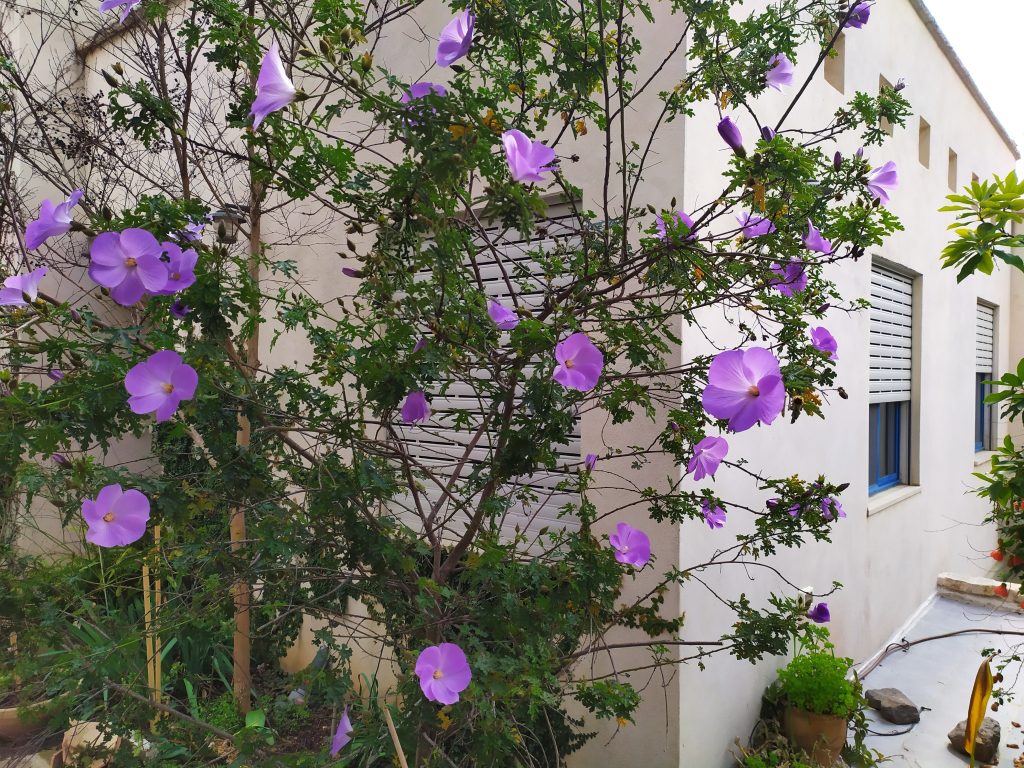
Alyogine huegelii – Lilac Hibiscus
Family: Malvaceae | Origin: South-West Australia
One of the most impressive spring sights is a large bush of Alyogine huegelii in full bloom, covered with dozens of huge lilac-blue flowers.
From a distance, it can sometimes be confused with its relative, the Hibiscus syriacus, but the Alyogine is smaller and sparser and blooms from late winter to late spring, when the Syrian Hibiscus replaces it and begins to bloom in May-June.
Lilac Hibiscus has dissected leaves with 3-5 lobes and grows tall rather than wide and sparsely.
The huge flowers, 8-10 cm in diameter, which appear mainly at the ends of the branches, have five overlapping petals and yellow stamens in their center. Each flower blooms for a day, but the buds are numerous and new flowers open daily.
The shrub grows relatively quickly to a height of 2-3 meters and a diameter of 1-2 meters and thrives in full or partial sun and with moderate to little irrigation and is resistant to competition from the roots of nearby trees or large shrubs.

?!So why isn't such a handsome flowering shrub more common in gardening
It turns out that Alyogine has several problems (we have solutions later in the article):
- In the warm and humid regions of the country, it is attacked by aphids in the spring and becomes unsightly without treatment.
- It is not easy to choose a place for it in the garden due to its large, open structure.
- With normal care, it tends to be short-lived and survives only 3-4 years in the garden, even in areas with a dry climate.
It turns out that this is one of those shrubs Sensitive to pampering; It suffers greatly from excess water and, apparently, like many other Australian plants that grow on sandy soils poor in phosphorus, is sensitive to excess phosphorus in the soil.
Indeed, we have found that planting it in excellent drainage conditions and reducing irrigation greatly extend its lifespan by up to 10 years or more! Planting it near other large plants in root competition that reduces water availability actually also helps it to live longer!
Regarding the other problems, we recommend planting it mainly in the less humid parts of Israel…
By pruning the upper third of the plant each year after flowering, you can get a denser and more compact bush. You can also take advantage of its natural structure and plant it behind shrubs or even inside a mixed hedge and thus benefit from the tall blooms without seeing the sparseness of its lower parts.
Due to its sensitivity to excess irrigation, it is not suitable for growing in containers for a long time, but if you follow our recommendations, you can grow in your garden a special shrub that will impress you every spring with its beautiful blooms for many years to come.
Good luck!
לקריאה על אליוגינת היגל (אליוג'ין) בעברית לחצו כאן

